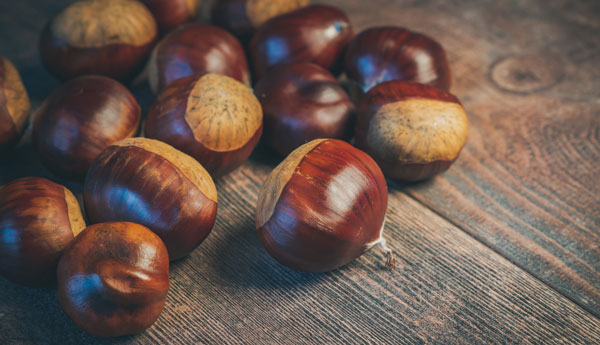
As the temperatures drop nationwide, snow blankets the ground and Christmas approaches, folks all over are beginning to indulge in their favorite holiday traditions. For some, this is cheery fires and yule logs. Others cut evergreens to adorn with festive ornamentation. Still others decorate their whole houses in lights. But for many, it’s the simplest of old-time traditions that really convey the warm spirit of the holiday. One such beloved tradition, is the roasting of chestnuts over a roaring fire. Lets explore a few methods for doing this, as well as some of the roots of this most favored holiday tradition.
Origins
Nat King Cole (and those who remade his classic hit) may have introduced that last several generations to chestnut roasting, but the practice goes back centuries. A traditional food source in Mediterranean cultures, roasting them was seen as a sign of chastity for Christians. They were also, reportedly, a well-regarded snack in Rome–even among those who could not lay claim to the previous elements of its symbolism.
Of course, the popularity of roasting chestnuts has declined somewhat, in recent years. While some take that as the yet another loss to an ever-sweetening American palette, or the disregard of tradition, there is unfortunately a far more simple explanation: there are less chestnuts. Like so many traditional trees, American Chestnuts, which once covered over 200-million acres of the eastern United States, has been decimated since the introduction of a blight from Japan in 1904. In less than 50 years, the blight eliminated 3.5 billion of the 4 billion trees in the US. There is some good news, however. Since 1983, the American Chestnut Foundation has worked to restore the tree across the country.
Roasting
So you’ve happened upon a chestnut (really a seed, technically), or you have a chestnut tree in your backyard, and want to roast up some up treats. What comes next?
First, make sure to select only firm, shiny chestnuts. A soft chestnut is a spoiled chestnut. If you intend on keeping them for a while, refrigerate them to avoid their drying out. If any molding occurs, it can be scrubbed off with a wet towel. Make sure to let the nuts re-dry for a few hours, to make sure no off-color spots are present.
Next, it’s time to prepare the chestnuts for heat. If the shell is not punctured, steam will build up inside the shell (particularly a freshly washed one) and cause the nut to explode. Punch at least two holes in the nut to avoid this or, traditionally, carve an X into the flat side. From here, you can either roast the nuts in an over for 15 minutes at 300 degrees or, my preferred method, roast them over a fire with a long-handled (and covered) pan, with family and friends. Happy roasting everyone!
A humble homesteader based in an undisclosed location, Lars Drecker splits his time between tending his little slice of self-sustaining heaven, and bothering his neighbors to do his work for him. This is mainly the fault of a debilitating predilection for fishing, hunting, camping and all other things outdoors. When not engaged in any of the above activities, you can normally find him broken down on the side of the road, in some piece of junk he just “fixed-up.”
